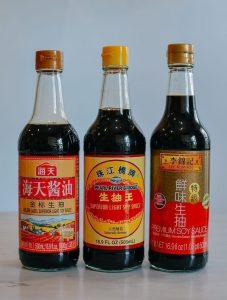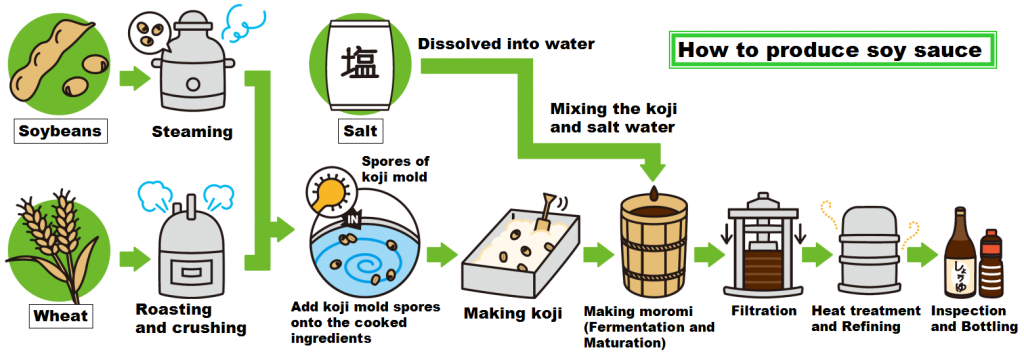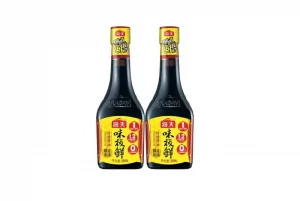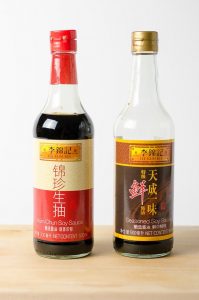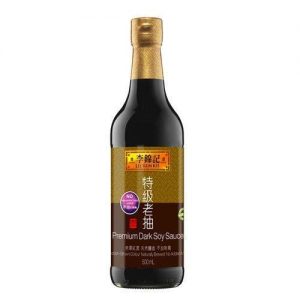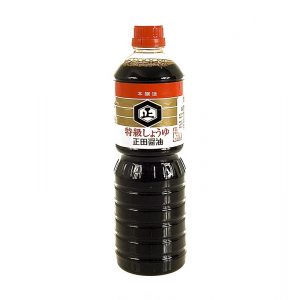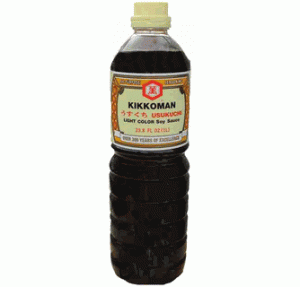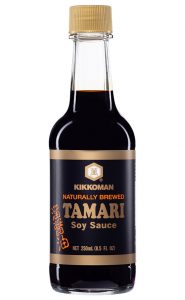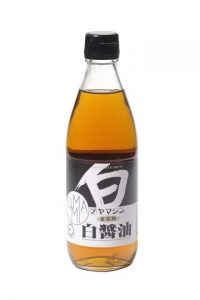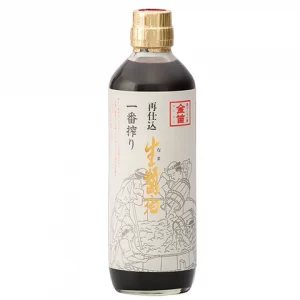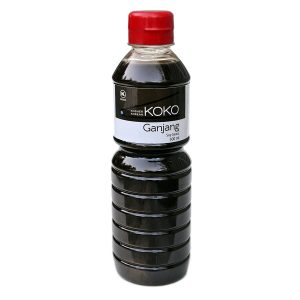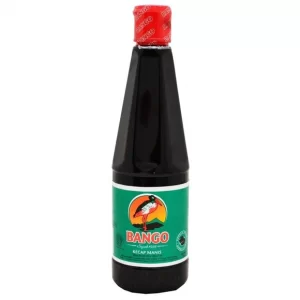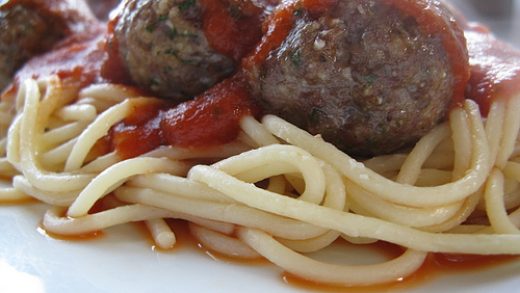Most people outside of Asia don’t think about soy sauce very often. They stick to the little packets that come with Chinese American take-out. Or they have a bottle in their pantry that is the same brand they grew up with. Beyond that, most of us know very little. We know it’s savory and salty and full of umami, or protein taste.
We usually reach for a name-brand sauce. That’s brands like La Choy and Kikkoman’s. But soy sauce has many different varieties, each has its own flavor, texture and appearance. So, what appears here next is a sort of primer on the many varieties of this common condiment.
What Is Soy Sauce?
Soy sauce is one of the oldest condiments in the world and is now one of the most commonly used condiments in the world. In Chinese, soy sauce is called Jiang yu. It originated during the Western Han Dynasty more than 2,500 years ago. It was made from fermented soybeans and wheat mixed with brine. The process then spread across Asia and was adopted by many different cultures and cuisines.
Most soy sauces are made the same way. Cooked soybeans are mixed with roasted wheat and then given a mold called Apergillus. After the mold takes hold, which takes about three days, the culture is combined with salt water and transferred into large vats. There, a bacteria is added called lactobacillus, which breaks down sugars into lactic acid. The mixture is allowed to ferment anywhere from six months to several years. Like wine, the older the ferment, the pricier the bottle. After fermentation, the mixture is strained and pasteurized, then bottled and sold.
Traditional soy sauce uses only soybeans, as do some of its variations. But each culture that has adopted soy sauce has its own variety that complements the local cuisine.
Chinese Soy Sauce
Let’s start with soy sauces from where it all started, China. In Mandarin, soy sauce is called Jiang Yu, and in the Southern region of China where Cantonese is the dominant dialect, Shang Chou. The many styles, names and pronunciations vary from region to region since there is no strict naming convention for soy sauce. This differs from Japanese soy sauce which has very strict naming rules. In the U.S., the Cantonese version is more common as most Chinese immigrants came from Southern China.
Light Chinese Soy Sauce
This is made from the first pressing of the fermented soybeans, much like extra virgin olive oil. This can be used as a general, all-purpose sauce but is more expensive than most dark sauces. It might also be labeled as Fresh, Pure Bean or Thin soy sauce.
Light soy sauces can also be double-fermented, with a light soy sauce being used as the brine component for a subsequent batch of soy sauce, which boosts the soy flavor without altering the salinity.
Dark Chinese Soy Sauce
This style of sauce is used strictly for cooking and finishing. It adds lots of color and a richer texture to sauces and foods. It is less salty than most types of soy sauce. Chinese dark soy sauce has a slightly viscous texture and is typically sweeter, due to the addition of sugar or molasses. It is often added at the last stages of cooking to season and add color to sauces, and there isn’t really a good substitute for it.
Japanese Soy Sauces
This style of soy sauce, called shoyu, is what we find most in the grocery store aisle. When it came from China, it was the Japanese who added wheat to the recipe for the most common styles. This produced a sweeter flavor than the umami-rich Chinese soy sauce. In general, Japanese soy sauce is divided into two groups: dark, called koiuchi shoyu, and light soy sauce, called usukuchi shoyu. However, there are three other varieties that are used in different ways and in different dishes. Shiro shoyu is white soy sauce, Tamari shoyu, which is a medium-dark, pungent sauce popular with people who want a more soy taste without all that wheat, and Saishikomi shoyu, which is a twice-brewed soy sauce. Let’s take a closer look at these.
Koikuchi Shoyu, Dark Soy Sauce
This is the most commonly used soy sauce in the Japanese kitchen and it’s what most of us think of when we think of soy sauce. Kikkoman’s, the most widely available soy sauce of this type in the United States, is not labeled Koikuchi but it is. This is a good all-purpose soy sauce used in cooking and on raw foods like sushi. It’s also used in marinades, gravies, braising liquids, stir-fries, and other sauces. If a recipe doesn’t specifically name the type of sauce to be used, chances are it is talking about Koikuchi.
If you want to step it up a notch, look for Marudaizu Shoyu, which uses only whole soybeans rather than a mash of soybeans. But this is still a type of Koikuchi. This type has a fuller, more nuanced flavor and is more subtle, making it difficult to tell the difference from other soy sauces except in a side-by-side comparison. You can usually find this type in an Asian specialty market or online.
There are pricier brands available, usually made in smaller batches and with longer fermentation times. However, all these different brands and styles of Koikuchi are pretty much interchangeable. You might want to make an exception for the premium brand if you are using it raw, as some of the more volatile flavor components disappear when cooked. This type is best for dipping sauces and that final touch to a dish before serving.
Usukuchi Shoyu, Light Soy Sauce
This style is lighter in color and taste than the dark variety. It is generally used in cooking light-colored dishes like soups and braises. It has a saltier, more assertive flavor with slightly more sweetness and acidity. Some brands add ingredients like Mirin, a sweet rice wine, corn syrup, and vinegar.
This type is most commonly found in the southern Japanese region of Kansai. In a strange coincidence, this type is older than Koikushi, or dark soy sauce. This is NOT a low-sodium product. It is highly recommended you taste it before using it, as the taste might not be what you expect.
The top brands, like Kikkoman’s and Yamasa, make a version of this, but they are usually blended. More undiluted brands you can get online offer a higher wheat content which makes a lighter color. Usukuchi is designed for cooking and is considered a staple seasoning like salt and pepper. The more organic, undiluted versions should have a smoother flavor than the harsher blends.
Tamari
This is one of the favorites in The Bachelor’s Kitchen. That’s because it is almost all soybeans, water and salt, with no or very little wheat. That makes this good for people who need to avoid gluten. This is used for dipping sauces, finishing seasoning, and glazing cooking meats.
Although Tamari is called shoyu, it is not made the same way. This is a byproduct of making miso, the liquid that runs off when pressing miso. There is some evidence that this type of soy sauce also predates the other versions of Shoyu. If gluten sensitive, look for Tamari which is labeled as gluten-free because many of the major brands on this type of soy sauce do use other ingredients, which might include a small amount of roasted wheat.
Because Tamari has a higher soybean content, the flavor is stronger with a hint of caramel and has a slightly thicker texture making it ideal for dipping sauce.
Shiro Shoyu, White Soy Sauce
Just as you would use white pepper to season a light or clear soup or sauce, Shiro has a lighter color and flavor. Unlike Tamari, this variety is brewed with more wheat than soybeans. This is used mostly for seasoning and as a dipping sauce for raw, white-fleshed fish, like sashimi, that would be overpowered by a dark sauce.
Saishikomi Shoyu, Twice-Brewed Soy Sauce
This type of soy sauce starts out the same way as most other soy sauces, but instead of adding salt-water brine, it is combined with already-brewed soy sauce. It is usually used as a finishing sauce or for dipping sashimi or sushi.
Korean Soy Sauce
Known as Ganjang, this type of soy sauce is made from pressed blocks of boiled soybeans treated with wild mold and bacteria using rice straw. The blocks are soaked in brine for a few months, then strained and fermented separately from the liquid, which is called doenjang.
There are three main types of ganjang. Joseon ganjang, or Guk ganjang, is made from only soybeans, salt and water. It is also called soup soy sauce and has a more assertive flavor than most sauces. This is also a general-purpose soy sauce. Yangio ganjang, uses wheat in addition to the other ingredients giving it a sweeter taste. This is mostly used for marinating meats and dipping sauces.
The third type of Korean soy sauce is called Jin ganjang, and is made with hydrolyzed soy proteins and other chemicals.
Look for any of these in specialty food markets and online.
Sweet Soy Sauce
The best know version of this type of soy sauce is kecap manis from Indonesia. This is made from fermented soybeans and flavored with palm sugar, star anise, and various aromatics. Many Indonesian dishes use this soy sauce to build a flavor profile and is used the same as other types of soy sauce. One use you may not think of for this style of sauce is as an ice cream topping, believe it or not. It gets its name from the Malay fish sauce with the same name. Kecap is distantly related to our tomato-based sauce called ketchup.
Low-Sodium and Gluten-Free Soy Sauces
As mentioned above, in many grocery stores you’ll find soy sauces that are branded as being low-sodium and gluten-free. For those who observe specific dietary restrictions, these are obviously good alternatives to using traditional soy sauces, many of which are made with wheat and which, of course, are quite salty. It has not been common in our experience to find higher-end soy sauces that are low-sodium or gluten-free, however.
Chemical Soy Sauce
Chemical soy sauces are made by hydrolyzing soy protein and combining it with other flavorings. Their flavor is far removed from traditional soy sauces made with fermented soybeans. It is made from defatted soy meal, the residue of soybean oil production, which is broken down—hydrolyzed—into amino acids and sugars with concentrated hydrochloric acid. This caustic mixture is then neutralized with alkaline sodium carbonate, and flavored and colored with corn syrup, caramel, water, and salt.
This is why we keep harping about reading food labels. Chemical soy sauces often have a harsh flavor.
How To Store Soy Sauce
Like olive oil, soy sauce is a fresh product that immediately begins to degrade in quality after the bottle is opened and it begins to oxidize. In our opinion, soy sauces shouldn’t be used sparingly, and you should resist the urge to treat them as precious commodities, particularly the more expensive varieties—you paid for them, you might as well use them when they’re at their best. That being said, soy sauces do store well, since they contain a lot of salt and aren’t likely to spoil in a way that will make you sick; they will simply not be as good if stored improperly.
Soy sauce’s two main enemies are light and heat, so be sure to store your soy sauce in a dark place away from a heat source (for example, above the stove or on the countertop).
Once you open a bottle of soy sauce, we recommend keeping it in the fridge, particularly if you don’t expect to use all of the soy sauce within a month or so. Stored properly in the fridge, soy sauce will most likely keep indefinitely. That said, if you have a crusty three-year-old bottle of Kikkoman kicking around, we recommend just buying a new bottle.
